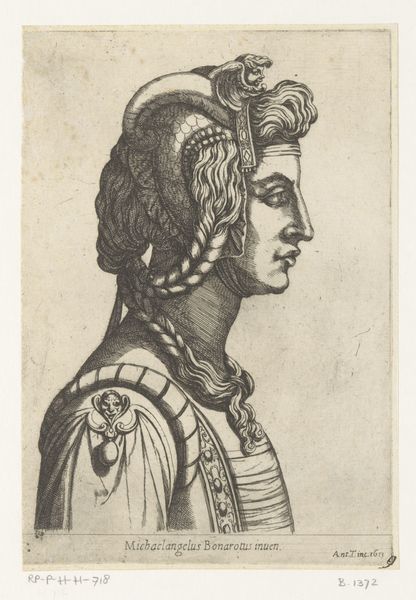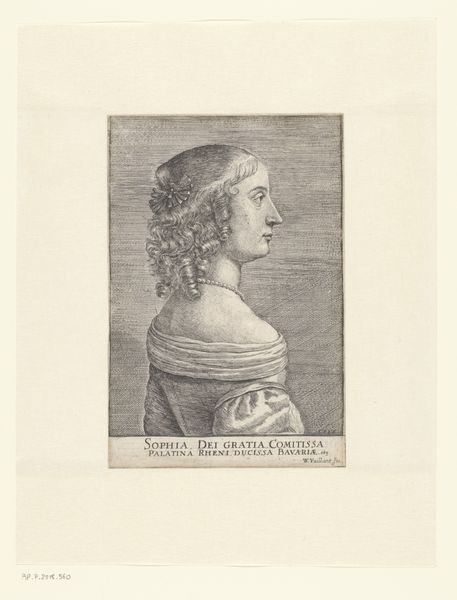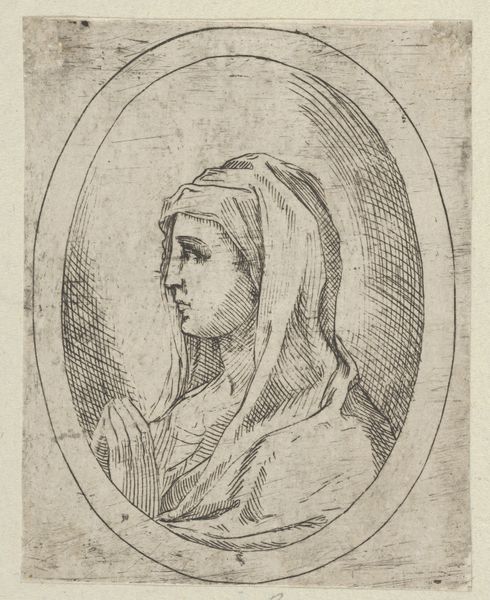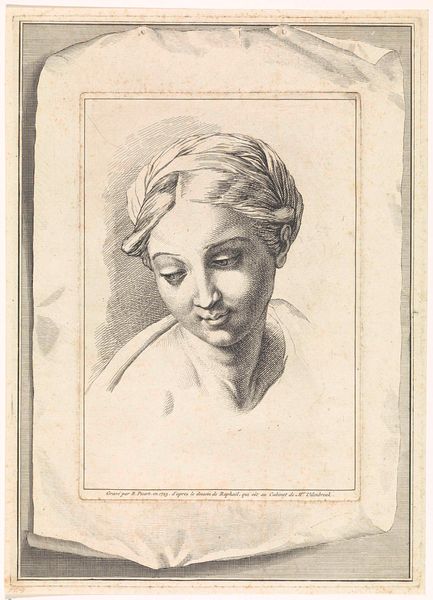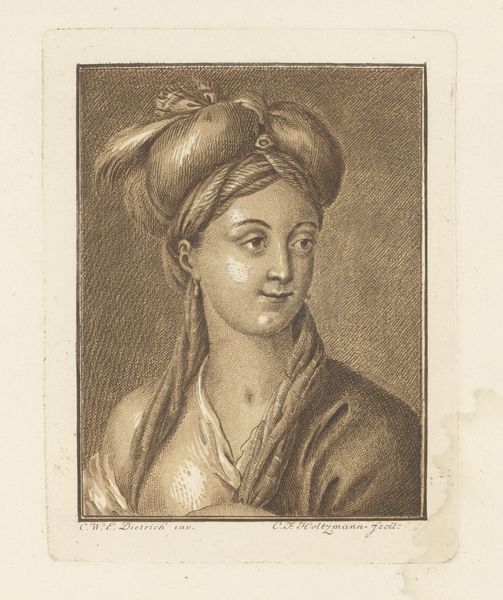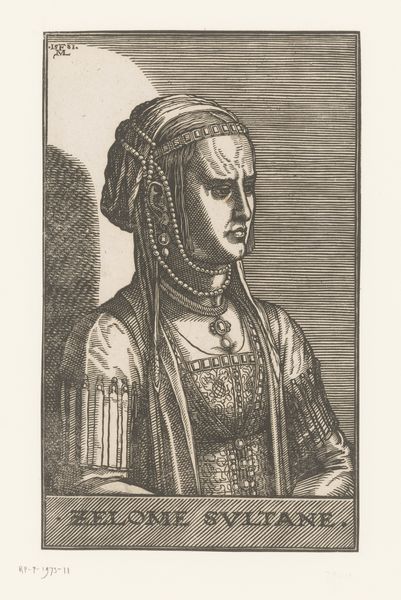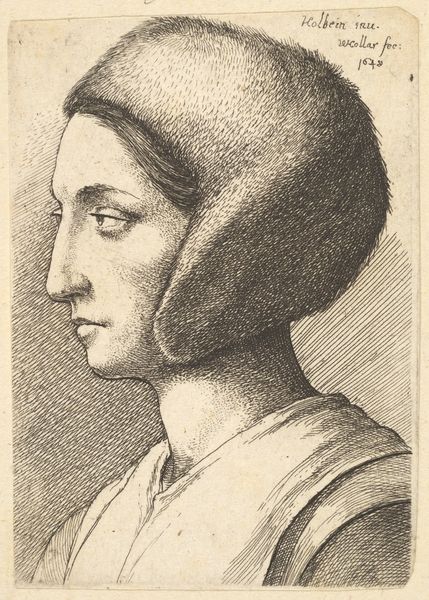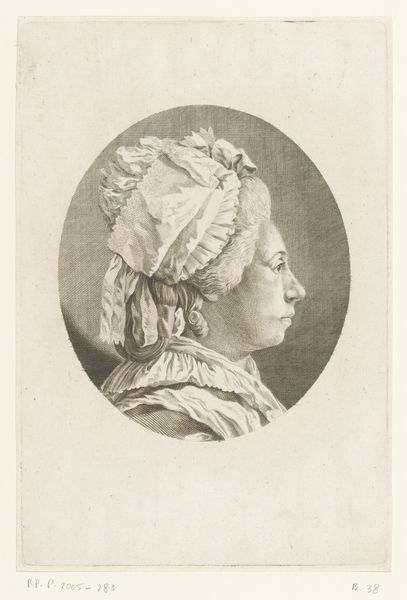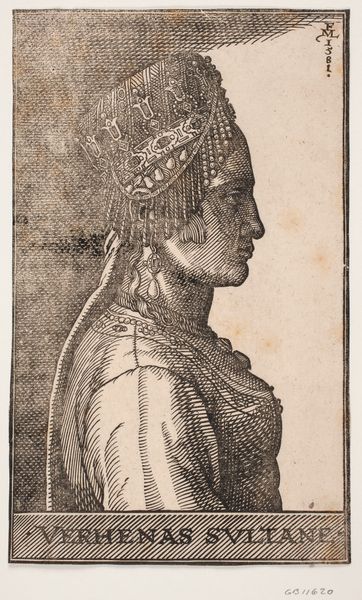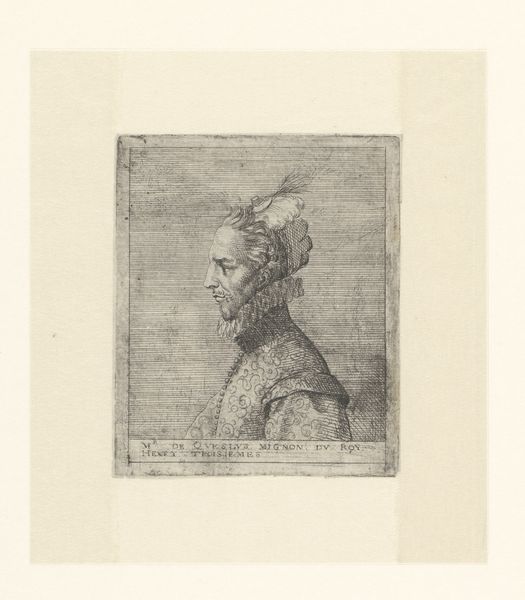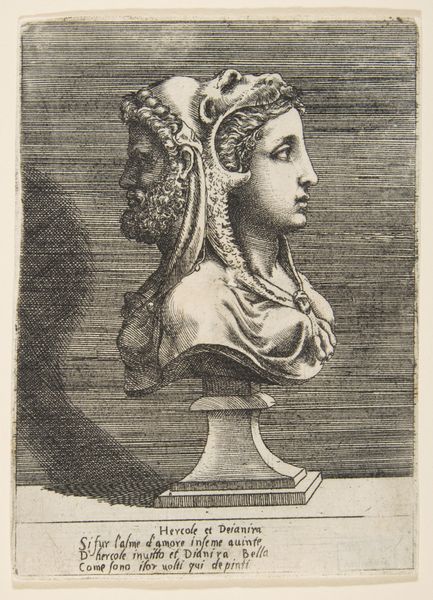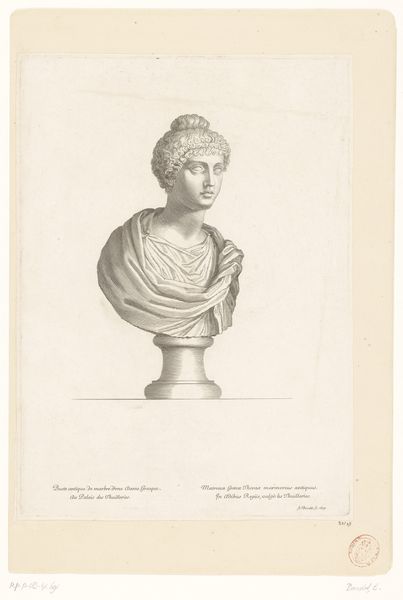
Buste van een vrouw, mogelijk een zelfportret van Maria de' Medici 1587
0:00
0:00
mariademedici
Rijksmuseum
engraving
#
portrait
#
old engraving style
#
caricature
#
11_renaissance
#
portrait drawing
#
italian-renaissance
#
engraving
Dimensions: height 300 mm, width 230 mm
Copyright: Rijks Museum: Open Domain
Editor: Here we have an engraving from 1587, titled "Buste van een vrouw, mogelijk een zelfportret van Maria de' Medici," which translates to "Bust of a woman, possibly a self-portrait of Maria de' Medici." It's a striking image, although the stark lines and severe profile give it quite a formal feeling. What stands out to you in terms of its historical context? Curator: What interests me most is considering how this image functioned within the political and social landscape of its time. Engravings like this were often commissioned to disseminate an image of power, prestige, and perhaps, in this case, even idealized femininity. Think about the role the Medici family played; how does this image enhance or manipulate their public persona? Editor: That's a really interesting point about image dissemination. Was there an expectation that portraits needed to serve a certain political purpose? Curator: Absolutely. During the Renaissance, portraits, particularly of powerful figures like Maria de' Medici, weren’t merely aesthetic objects. They were carefully crafted statements, meant to project authority and influence. The very act of creating and circulating her image contributed to constructing and solidifying her role, even if it differed from reality. Notice her headpiece: in what way is this choice of clothing functioning symbolically to relay the Medici political role at this time? Editor: It does feel almost like armor, solid and unwavering. I suppose I never really thought about art being used so deliberately to influence public perception. It’s fascinating to see the layers of meaning beneath a seemingly simple portrait. Curator: Indeed. Consider then that museums that showcase this very portrait participate actively in a modern socio-political phenomenon where certain images are canonized. Each element– the line work, the setting of its display – contributes to shaping a certain public understanding of Maria de’ Medici. Thinking critically about these factors broadens our interpretation and appreciation. Editor: I've never considered how the act of exhibiting art reinforces or challenges existing power structures, that adds an extra dimension to interpreting this bust. Thank you.
Comments
No comments
Be the first to comment and join the conversation on the ultimate creative platform.
